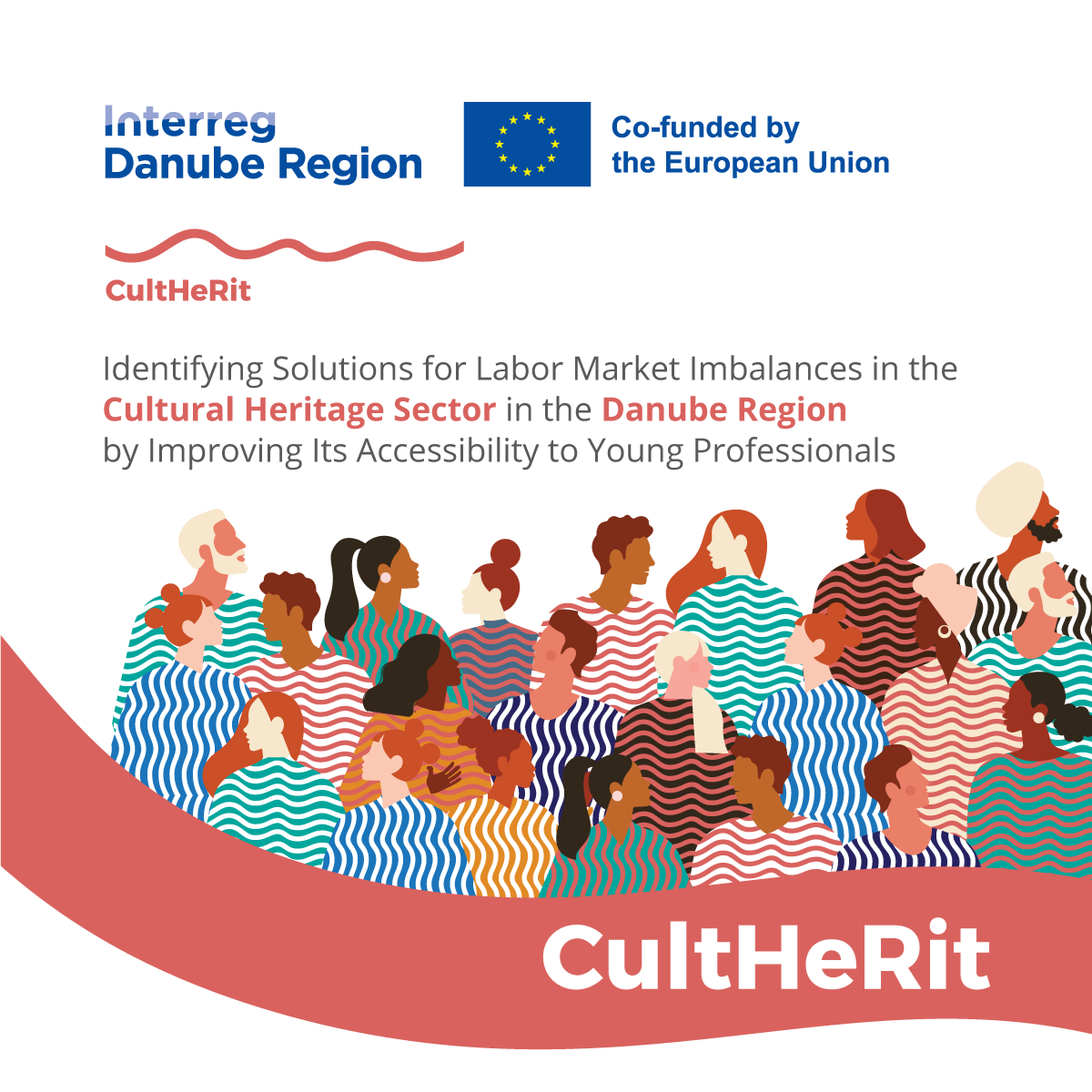Project; 01.01.2024 – 30.06.2026
EUSDR Priority Area(s): PA 3 Culture & Tourism
CultHeRit is an initiative of 13 cultural heritage institutions and their associations from 10 countries in the Danube Region that gathered to identify and test solutions for the brain drain of young talents and professionals from the cultural heritage sector. This phenomenon manifests on both sectoral (from the cultural heritage to more lucrative sectors), and territorial (from East to West) level. To reverse this, the multidisciplinary partnership from the Region aims to induce positive changes of the current employment practices in the cultural heritage institutes and museums in the Region. By increasing the accessibility of the sector for young professionals, the project will contribute to slowing down and reversing migration of highly educated young people and to retaining skilled labour, while increasing diversity of the sectoral workforce. Ultimately, CultHeRit strives to ensure that the sector becomes and remains an attractive workplace which offers a rewarding career and professional development to its young employees.
The partners analyse the dynamics and current conditions in the sectoral labour market: employment practices, educational offer and expectations of potential candidates. After diagnosing the extent of the problems and identifying areas for improvement, the partners jointly devise an aspirational transnational employment model. Through a series of pilot actions, 10 partner organisations are testing the applicability of this ideal model under real-life conditions, after adapting it to the national regulations and local environments.
Objectives: The main objective of the project is to optimise the sectoral labour market by inducing positive changes in the employment practices currently applied in the cultural heritage sector in the Danube Region.
The specific objectives are:
To better understand obstacles to accessibility of jobs and improve employment outcomes in cultural heritage institutes and museums in the Danube Region, and
To define and test an aspirational transnational employment model for the cultural heritage institutions from the Danube Region.
Need and (expected) impact: The 10 cultural heritage institutes and museums will jointly develop and test the employment model and accumulate experience and know-how which will allow them to update and modernise their human resources (HR) procedures and practices. The other three partners will gain an in-depth knowledge of the mechanisms regulating the labour market in the cultural heritage sector in the Danube Region and their countries, and will have the opportunity to contribute to the development of the solutions which will benefit their members and everyone in the field. The Associated Strategic Partners will obtain currently scarce or unavailable data related to the labour market in the cultural heritage sector, gain valuable insight into its workings and dynamics and receive evidence-based recommendations.
Macro-regional dimension: CultHeRit is an initiative of 13 cultural heritage institutions and their associations from 10 countries in the Danube Region.
Stakeholders involved: Primarily, the partner organisations represent cultural heritage institutes, museums, employment agencies, and the civil sector. Through the informal consultative bodies established in each participating country (Key Stakeholder Group), other types of stakeholders are involved, such as ministries, universities, museum associations, etc.
Budget and Funding: funded by Interreg Danube Region Programme
Further information: https://interreg-danube.eu/projects/cultherit



